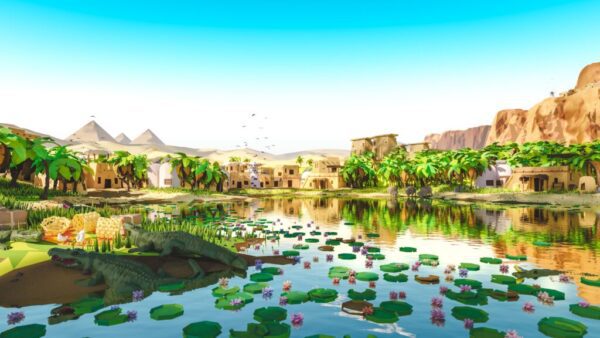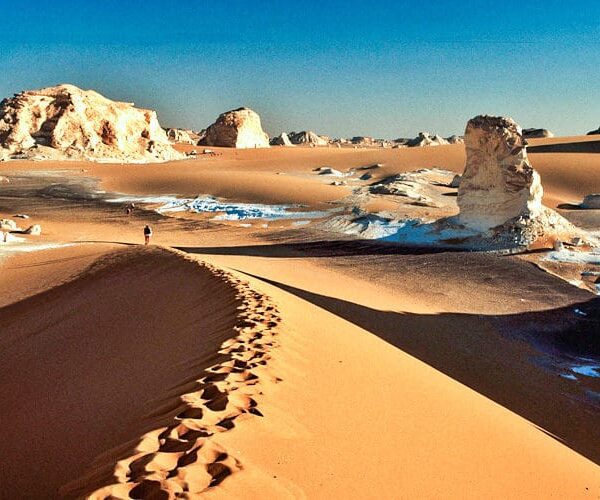
Egyptian Oasis: Discover the 7 Enchanting Beauties
Egyptian Oasis: A Gateway to Serenity in the Desert When you think of Egypt, images of ancient pyramids, vast deserts, and the mighty Nile River probably come to mind. But beyond these iconic attractions lies a hidden treasure: Egypt’s oases. These lush patches of greenery and life are scattered across the country’s arid landscape, offering a tranquil escape from the hustle and bustle of everyday life. In this blog post, we’ll explore the beauty, culture, and history of Egypt’s most famous oases and why they are a must-visit for travelers seeking a unique experience.
What is the Egyptian Oasis?
Egyptian Oasis is a fertile area in the middle of a desert where water is naturally available, allowing vegetation to grow and communities to thrive. In Egypt, oases have historically been crucial for survival, serving as vital stopovers for trade caravans and offering shelter, food, and water. Today, these desert havens continue to support local life, but they have also become key tourist destinations.
The Famous Oases of Egypt
Egypt boasts several oases, each with its unique charm and history. Let’s take a closer look at some of the most well-known ones.
1. Siwa Egyptian Oasis: A Desert Gem
Tucked away near Egypt’s western border with Libya, Siwa Oasis is one of the most picturesque and historically rich oases in Egypt. Siwa stands out for its strong cultural identity, with its inhabitants maintaining their Berber traditions and language.
- Historical Significance: Siwa is home to the famous Oracle of Amun, where Alexander the Great is said to have visited to confirm his divine rule. The temple ruins, known as the Temple of the Oracle, are one of the main attractions here, drawing history buffs from around the world.
- Natural Beauty: Siwa Oasis is surrounded by palm groves, salt lakes, and sand dunes, making it a paradise for nature lovers. One of the most popular activities in Siwa is taking a dip in the natural springs, such as Cleopatra’s Bath, a freshwater pool said to have been visited by the queen herself.
- Local Culture: Siwa has a unique culture shaped by its isolation. The local Siwi people still wear traditional clothing, and the architecture reflects Berber influence, with mud-brick houses that blend seamlessly into the desert landscape. you can read more about Siwa Oasis – Wikipedia
2. Bahariya Egyptian Oasis : The Gateway to the Black and White Desert
Bahariya Oasis is situated around 370 kilometers southwest of Cairo and is known for its close proximity to the Black and White Deserts—two of Egypt’s most striking natural wonders.
- 1- The Black Desert: A landscape dotted with black volcanic hills, the Black Desert is a sight unlike any other. The dark stones scattered across the sands create a surreal, almost otherworldly atmosphere.2-
- 2- The White Desert: In stark contrast to the Black Desert, the White Desert is famous for its unique chalk rock formations, which have been shaped by wind erosion over millennia. These ghostly white structures look like they belong on another planet and are a photographer’s dream.
- Cultural and Historical Sites: Bahariya itself has several interesting historical sites, including the Valley of the Golden Mummies, a Greco-Roman necropolis where hundreds of mummified remains have been discovered. Visitors can also explore ancient tombs and temples, giving them a glimpse into the oasis’ past.
3. Farafra Egyptian Oasis : A Peaceful Haven
Farafra is one of the smallest oases in Egypt, but what it lacks in size, it makes up for in serenity. Located between Bahariya and Dakhla oases, Farafra is the perfect destination for travelers seeking peace and quiet.
- The White Desert National Park: Farafra is the starting point for exploring the White Desert National Park, a protected area known for its stunning rock formations. Whether you’re camping under the stars or taking a jeep tour, the experience of wandering through these natural sculptures is unforgettable.
- Local Art and Culture: Farafra is also home to Badr Museum, a small but fascinating art museum run by a local artist named Badr Abdel Moghny. His works are inspired by the desert surroundings and provide insight into the oasis’ culture.
4. Dakhla Egyptian Oasis: A Historical Treasure Trove
Dakhla Oasis is a lush valley surrounded by sandy dunes, located around 350 kilometers from the Nile. It’s known for its well-preserved historical sites, making it a paradise for history enthusiasts.
- Al-Qasr Village: One of the main attractions in Dakhla is the ancient Islamic village of Al-Qasr, which dates back to the 12th century. Walking through its narrow alleyways and past mud-brick houses feels like stepping back in time.
- Deir al-Hagar Temple: Dakhla also boasts ancient Egyptian ruins, such as the Temple of Deir al-Hagar. This Roman-era temple is dedicated to Amun, Mut, and Khonsu and is remarkably well-preserved.
- Natural Springs: Like other oases, Dakhla is home to natural hot springs that are perfect for a relaxing soak after a day of exploring the desert.
5. Kharga Egyptian Oasis: The Largest Oasis
Kharga is the largest and most developed of Egypt’s oases, located around 550 kilometers from Cairo. Its modern infrastructure makes it more accessible than some of the other oases, but it still retains its desert charm.
- Hibis Temple: One of the standout attractions in Kharga is the Hibis Temple, which dates back to the 6th century BC. It’s one of the best-preserved Persian temples in Egypt and features stunning hieroglyphs and artwork.
- The Necropolis of Bagawat: Kharga is also home to one of the oldest Christian cemeteries in the world, the Necropolis of Bagawat. The site contains over 200 tombs, many of which are adorned with early Christian art and frescoes.
Why Visit the Egyptian Oasis?
Visiting an Egyptian oasis offers a completely different experience from the typical tourist attractions in Cairo or Luxor. Here are some of the reasons why you should add an oasis to your Egypt itinerary:
- Natural Beauty: The contrast between the lush greenery of the oases and the surrounding desert is breathtaking. Whether you’re hiking through sand dunes or soaking in a spring, the scenery is unparalleled.
- Cultural Immersion: Many of the oases have retained their unique cultural identities, allowing visitors to experience a side of Egypt that is often overlooked. From traditional music and dance to local handicrafts, the oases offer an authentic glimpse into desert life.
- Adventure Opportunities: The oases are perfect for adventurous travelers. Whether you want to try sandboarding, go on a camel trek, or camp under the stars, there are plenty of activities to keep your adrenaline pumping.
- Tranquility: If you’re looking to escape the crowds, an oasis is the ideal destination. The peaceful surroundings and slower pace of life make it the perfect place to unwind and recharge.
Final Thoughts
Egypt’s oases are hidden gems that offer a unique blend of history, culture, and natural beauty. Whether you’re exploring the ancient ruins of Siwa, marveling at the White Desert’s rock formations, or soaking in a hot spring in Dakhla, a visit to an Egyptian oasis is sure to be an unforgettable experience. So the next time you plan a trip to Egypt, venture beyond the pyramids and discover the serene oases that lie waiting in the desert.
Recent Posts
Edfu Temple :5 Reasons to Explore the Majestic Today
Discover 7 Amazing Features of Sinbad Hotel Egypt for 2024
Top 7 Reasons to choose Egypt Air Hospital in Egypt
All Categories
Tags

Thailand






